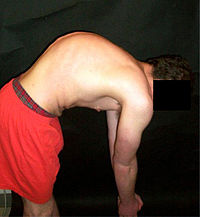
Photo from wikipedia
Is that Notre Dame de Paris on fire? That was the question bewilering Parisians and tourists on the spot and TV viewers worldwide. s the news was confirmed, it spread… Click to show full abstract
Is that Notre Dame de Paris on fire? That was the question bewilering Parisians and tourists on the spot and TV viewers worldwide. s the news was confirmed, it spread like a shock-wave. Monday, pril 15, 2019, 6.50 pm, and passers-by were rubbing their eyes s flames shot up from the scaffolding, unable to believe it could e true, and then realizing in anguish just how hard it was going o be to bring the violence of the blaze under control beneath the rowing pall of thick smoke. Whatever their country, whatever their beliefs, witnesses round the world froze at the sight of this Cathedral, which might ave been a symbol of division but which, in its conflagration, nited them in contemplation. The “Oh no!”, when the flamming rrow collapsed, that rose in a single groan from the crowd gave oice to the intensity of the emotion aroused by this disaster, like vision of the Inferno itself. The image of Notre Dame de Paris, this edifice celebrated by ictor Hugo, was implanted in minds the world over, a historical ingularity shared by all. Victor Hugo, in Notre Dame de Paris, published in 1831, created character, Quasimodo, abandoned by his parents at the age of 4 ecause of his physical deformities. He was taken in by Archdeaon Claude Frollo, who named him Quasimodo: “Quasi modo geniti nfantes.” (“As newborn babes. . .”), from the first Epistle of Peter the postle. Hugo wrote: “He (Frolo) baptized his adopted child, and amed him Quasimodo, either because he wished to mark in this ay the day upon which the child was found, or because he wished o show by this name how imperfect and incomplete the poor litle creature was. Indeed, Quasimodo, one eyed, hunchbacked and nock kneed, was hardly more than half made”. His work as the ell-ringer of Notre Dame added traumatic deafness to the list of his nfirmities. Although cophotic, Quasimodo was by no means deaf to he charms of Esmeralda, a graceful and innocent 16-year-old gypsy ancer for whom he developed a deep platonic love, protecting her gainst the demon of lust that consumed his master Frollo. In this issue of the Annals of Endocrinology, Dr. Michael Hafi, a ediatrician-Endocrinologist, at the University of Texas, Houston, evisits Hugo’s Quasimodo in an attempt to line him up to a known linical syndrome [1]. The author gives Hugo’s original description f the physical traits of Quasimodo and suggests that the bone malormations, facial dysmorphism and skin growths may correspond o the description of neurofibromatosis by Van Recklinghausen n 1882. The comparison to Proteus Syndrome [2], described in 976 and brought to cinema audiences as the “Elephant Man”, s more convincing. This syndrome could well match the physcal aspect of Quasimodo, whose deformities reached back into
Journal Title: Annales d'endocrinologie
Year Published: 2019
Link to full text (if available)
Share on Social Media: Sign Up to like & get
recommendations!